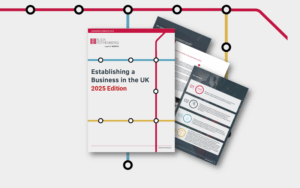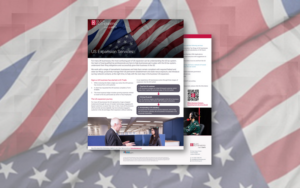Government tax take up £80 billion on pre pandemic figures
Government statistics issued today show that HMRC tax receipts are £80 billion higher than they were before the pandemic
Self-assessment income tax receipts collected in January and February 2022 (the two months when people were due to pay it over due to extended deadlines) saw a small reduction of just over £800 million from the same two months in 2021.
Whilst the self-assessment receipts have dipped, Capital Gains Tax (CGT) receipts are positively buoyant. Rules on paying tax on property transactions throughout the year mean that there is now a steady inflow each month. Total receipts are up nearly £5 billion (£4.8 billion) in the last 12 months.
There was much speculation following the Office of Tax Simplification’s suggestion for an alignment of CGT rates to income tax rates, and clearly this has led to additional trades with investors acting to bank gains before a tax rise that never came. It just shows the power of speculation, as the Government have created revenues here from investors’ fears!
All taxes are accelerating year on year at a high rate – way above inflation. VAT leads the way (though those results need to be tempered by the VAT holiday which means the increase in the last 12 months is not reflecting like for like collection), with SDLT close behind.
It is hard to pick out what is driving this, as inflation is at 5% in the period. SDLT receipts reflect the much-increased property transactions which are some 30% higher year on year, although noticeably the property activity from October to February is lower than last year, which could signify an imminent drop.
Importantly, income tax and PAYE is up 13 – 15% – given this accounts for most of the tax take for the Government, the finances should be in a better shape. Going forward Corporation Tax (CTX) may be driven by the incoming CTX increases from April 2023.
Income tax / PAYE / NIC receipts may increase significantly for March 2022 in advance of the introduction of the Health and Social Care Levy. Interestingly NIC receipts remain almost constant between 19/20 and 20/21. VAT receipts for 21/22 are up significantly against 19/20 i.e., prior to the pandemic – possibly due to increased spending post pandemic. Going forward though, rising costs may have an impact here.
Want to know more?
If you would like to discuss how the above may impact you, please get in touch with your usual Blick Rothenberg contact, or Paul Haywood Schiefer using the details on this page.
For press enquiries please contact David Barzilay.
Self-assessment income tax receipts collected in January and February 2022 (the two months when people were due to pay it over due to extended deadlines) saw a small reduction of just over £800 million from the same two months in 2021.
Whilst the self-assessment receipts have dipped, Capital Gains Tax (CGT) receipts are positively buoyant. Rules on paying tax on property transactions throughout the year mean that there is now a steady inflow each month. Total receipts are up nearly £5 billion (£4.8 billion) in the last 12 months.
There was much speculation following the Office of Tax Simplification’s suggestion for an alignment of CGT rates to income tax rates, and clearly this has led to additional trades with investors acting to bank gains before a tax rise that never came. It just shows the power of speculation, as the Government have created revenues here from investors’ fears!
All taxes are accelerating year on year at a high rate – way above inflation. VAT leads the way (though those results need to be tempered by the VAT holiday which means the increase in the last 12 months is not reflecting like for like collection), with SDLT close behind.
It is hard to pick out what is driving this, as inflation is at 5% in the period. SDLT receipts reflect the much-increased property transactions which are some 30% higher year on year, although noticeably the property activity from October to February is lower than last year, which could signify an imminent drop.
Importantly, income tax and PAYE is up 13 – 15% – given this accounts for most of the tax take for the Government, the finances should be in a better shape. Going forward Corporation Tax (CTX) may be driven by the incoming CTX increases from April 2023.
Income tax / PAYE / NIC receipts may increase significantly for March 2022 in advance of the introduction of the Health and Social Care Levy. Interestingly NIC receipts remain almost constant between 19/20 and 20/21. VAT receipts for 21/22 are up significantly against 19/20 i.e., prior to the pandemic – possibly due to increased spending post pandemic. Going forward though, rising costs may have an impact here.
Want to know more?
If you would like to discuss how the above may impact you, please get in touch with your usual Blick Rothenberg contact, or Paul Haywood Schiefer using the details on this page.
For press enquiries please contact David Barzilay.

You may also be interested in

Ele Theochari has been appointed as Vice President of The Association of Taxation Technicians

Retailers Both Online and High Street Struggle Amid Rising Staffing Costs













